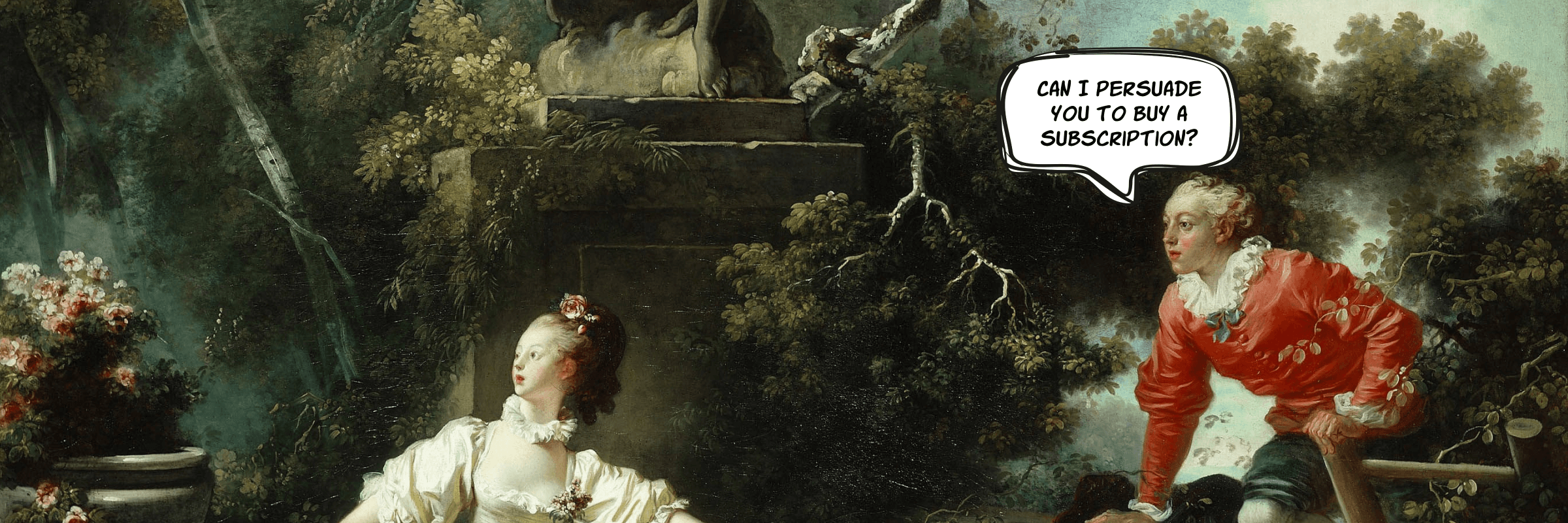Want to Generate More Leads? Try the Power of Persuasion in Marketing
Marketing is all about your ability to influence and persuade. So, what constitutes the power of persuasion? What does empathy have to do with it? And how does one stay true to themselves by selling customers what they need?
Written by Anastasiia Khlystova

Perhaps you poured a significant amount of money into your marketing efforts. You have it all figured out.
Social media… check!
Email marketing… check!
Affiliate marketing… check!
You checked everything you could think of to market your business the best way possible. After a while, leads trickle in slowly, but it’s not exactly matching your expected return of investment. It can seem like you can’t convince your target audience to visit your eCommerce site.
In this piece, we’ll talk all about persuasion marketing, the power it holds on boosting your marketing efforts, and how you can effectively use it for your eCommerce marketing. I will cover the following:
- The difference between persuasion and manipulation
- Principles of persuasion marketing
- Persuading customers at the right time
- Offering customers something for reciprocity
- How empathy can persuade your customers
- Providing customers with practical solutions
- Leveraging expert’s opinions
Let’s take a closer look at what persuasion marketing means and how it differs from manipulation.
What is persuasion marketing?
Persuasion marketing means using your knowledge of human psychology in developing practices to influence your audience’s actions and attitudes. It includes building on a customer’s behavior and leading them to make your desired action.
For example, persuasion marketing entails using human psychology to design your landing pages. Site elements like layout, font, and copy can motivate visitors to follow a particular action, such as subscribing to your newsletter or buying your product.
Persuasion can sometimes be misconstrued as manipulation. However, manipulation means misleading a person by controlling their thinking and pressuring them to your will. Persuasion, on the other hand, is strongly recommending a product or service that will benefit the customer in the end. It means convincing customers with logic instead of dishonest promises.
For you to effectively develop persuasion marketing, let’s go over its different elements.
What are the elements of persuasion marketing?
There are four major elements that make up persuasion marketing: storytelling, copywriting, structured communication, and neuromarketing.
- Storytelling. This uses a narrative framework to evoke your customer’s emotions and instinctive response. These responses will then domineer over their analytical side.
Various features like photos, copies, videos, and even Valentine marketing words on February 14th can trigger an emotional response. It can be adoration, empathy, or familiarity. Then, these emotions can inspire your customers to buy from your business.
- Copywriting. This utilizes the appropriate words for your copy. Your copy includes product descriptions, photo captions, and headings. Basically, it entails every written word on your website.
When using persuasion in your marketing, you can do an A/B test with different copies and other elements. This way, you can determine which version produces the best results from your visitors.
- Structured communication. The order in which you present information to your customers and how you will display it matter.
With structured conversation, you can advance your customer’s impulse. When they reach their impulse’s highest level, you can push them with a compelling call to action.
For instance, the first landing page your customers see should not be about quickly making a sale. It should show a welcoming message that encourages them to further explore your eCommerce website. It’s like when brands tend to amuse customers during April Fool’s sales while leading them to purchase.
- Neuromarketing. This is the element where you can apply psychology to your marketing. The psychology of color, aesthetics and the engagement of other senses come to play. These can set a specific mood and influence your customer’s purchasing decisions.
For instance, retail stores display new items on their front bays to “prime” their customers. In eCommerce, this can translate to displaying what’s new on your main landing pages.
In addition to these elements, there are also principles that you can say are the “weapons” of persuasion marketing.
- Principle of Reciprocity. The idea is to do something positive for your customers in order to receive something in return. Offering them something beneficial will make your customers feel obligated to give something back.
- Social proof. Without realizing it, people are constantly influenced by others. Testimonials and reviews on your site from satisfied customers can increase your persuasion powers.
- Scarcity. You can persuade your customers to immediately purchase when they see that your product or service is rare.
- Authority. Perceived expertise in your industry can heavily affect your customers’ perception as customers see this as more trustworthy.
How to do successful persuasion marketing?
#1 – Learn when is the right time to persuade customers
Users may not be ready to make a purchase when they visit your users. Sometimes, they might not even realize that they have a problem that your brand can solve. When situations like this happen, you wouldn’t be able to use persuasion marketing, as the user is not even aware of why they need your business.
The best thing you can do is pay attention to your customer’s journey. Going through what your customers go through when they visit your store will help you understand when the best moment is to display your product to your target audience.
For instance, you can advertise with relevant influencers to introduce your business, along with the problems you can solve. You can use phrases such as “Learn more” or “Find out more” on your copy to entice users to visit your website.
Adobe marketing features Billie Eilish on their Facebook ad. Through her story, a customer can realize how the product can benefit their creative endeavors. The call to action has the words “Learn more” that can persuade first-time customers to explore their product.
#2 – Offer something that encourages reciprocity
We feel thankful when someone gives us something. It doesn’t matter if it’s a gift or even a simple compliment. When we feel grateful, we want to reciprocate what was offered to us in a similar amount, or even bigger.
You can implement this in your marketing through the power of persuasion. Offering discounts on first purchases, free shipping, and free gifts can urge first-time visitors to buy from you. You can also offer special discounts to compel shoppers into registering for your website, instead of purchasing as a guest.
You can start by offering time-limited free trials to show how your product can be valuable to your customers. SaaS companies can apply this by presenting free trials of their product or service. Make sure that it’s not too costly that you may take some loss.
Ancestry is a website where you can discover your online family history. To persuade visitors into trying it out, they offer different options for a free trial.

Through reciprocity, you can sway your customers into converting. They may even recommend your brand to their social circles on social media platforms. Not only do you increase conversions, but you also widen your audience.
#3 – Be empathetic
Put yourself into your customer’s shoes. Doing so will make you better grasp your audience’s needs and wants. When you take their experience into account, your power of persuasion can be on a higher level.
Being empathetic to your target audience’s pain points will help you with your sales rationale to please them. Influencing customers without empathy can be easily be seen as dishonest.
The shoe company Allbird takes empathy further with their “We’re Better Together” program. During the pandemic, the program gives their customers a chance to buy a $60 donation for healthcare workers.

After purchasing, their customers usually experience their post-purchase experience on social media platforms to encourage their friends and family to do the same.
#4 – Provide customers with practical solutions
We’ve talked about visitors now realizing their pain points. And when they ultimately understand, they won’t immediately purchase your product or service, either.
That’s because they may not have an idea of what to do next after you have illuminated them. You can make your intentions clear with a powerful call to action (CTA). Create a CTA button that’s visible and comprehensible. That way, your customers can also easily make a purchase on your online store.
Barkbox provides a practical solution through their main landing page. It gives their customers two easy options. A customer can either create a box of their own, or give their subscription as a gift to others.

#5 – Leverage experts’ opinions
If tech billionaire Elon Musk offers you advice about business, would you take it? What about taking investment tips from business magnate Warren Buffett?
The point is that we trust opinions coming from someone who is seen as an authority figure within their industry. Their established expertise is proof enough that what they say is trustworthy. We believe that any decision we make from their advice has a higher chance of success.
That’s why influencer marketing plays a big part in persuasion marketing. They already have success through their know-how in their niche, which makes them highly looked at.
You can partner with influencers and industry experts to vouch for your brand. Your target audience will trust you more, and can increase your chances of increasing sales. Just one caveat: when selecting influencers to partner with, make sure you run a fake follower check and analyze their audience’s demographics to make sure they can actually help connect you with your target audience.
The technology company NVIDIA collaborates with tech influencers to introduce new products. Through their collaboration, they can leverage influencers to further their persuasion marketing. Their company may be already big, but it can be tricky to present new products to a new audience.

In conclusion
Putting effort into influencing your customers will substantially affect your conversion rates. So, take a look at your eCommerce site and marketing channels. Look for aspects you can tweak to create a more persuasive tone. Check for things that you think turn away customers, too.
The better you understand your customers, the better influence you’ll have over their purchasing decisions.




